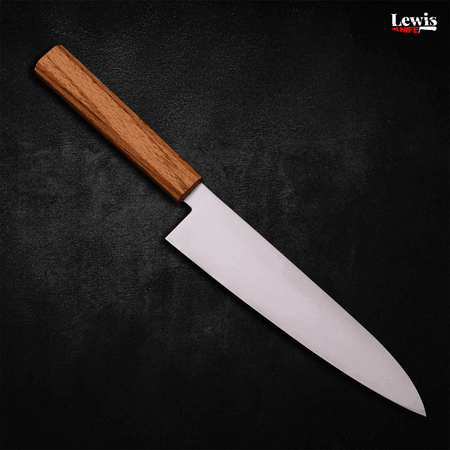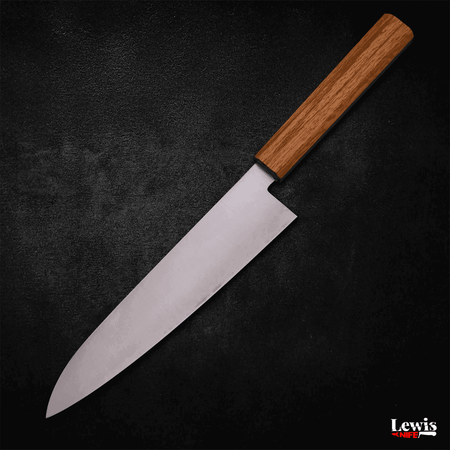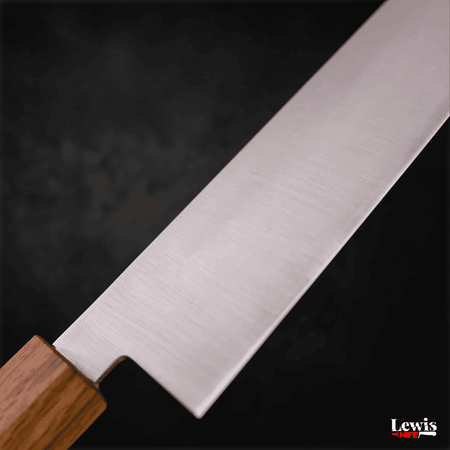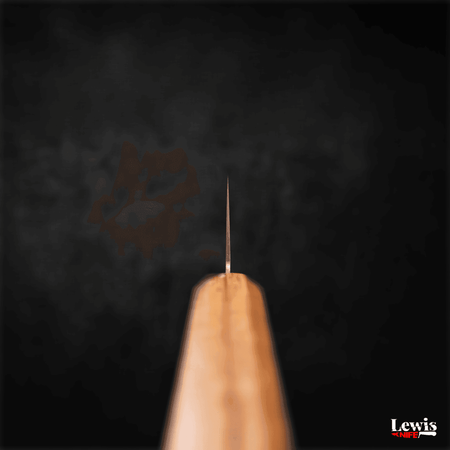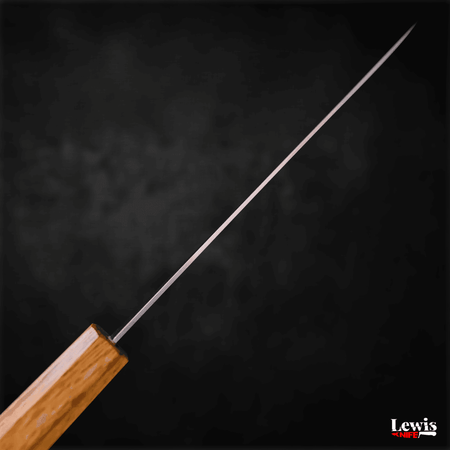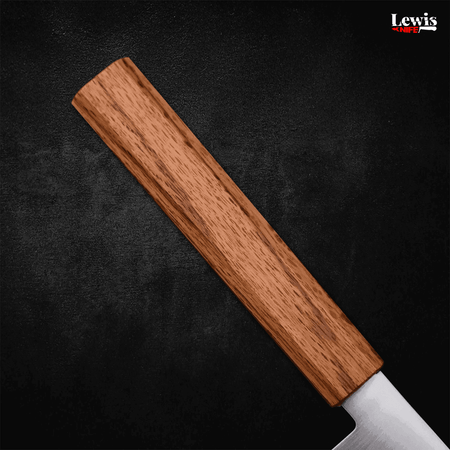With its perfect balance of durability, sharpness, and rust resistance, AUS-10 steel is widely favored for kitchen knives that require less maintenance while offering long-lasting performance.
AUS-10 Steel
Filter
6 products
-
Sort by
AUS-10 steel is a high-quality stainless steel known for its solid balance of sharpness, durability, and corrosion resistance. Commonly used in Japanese kitchen knives, AUS-10 steel offers excellent performance with moderate maintenance. Therefore, it is favored by both home cooks and professional chefs
What Is AUS-10 Steel?
AUS-10 steel is a high-carbon, stainless steel developed by Aichi Steel. Known as a good step up from AUS8 steel, AUS-10 is widely used in kitchen knives because it provides a reliable cutting edge while resisting rust and wear. With a hardness range of 59-61 HRC when properly heat-treated, AUS-10 provides a well-rounded performance suitable for both home and professional use.
- Carbon content: 0.95 – 1.10% for sharpness and edge retention
- Chromium content: 13–14.5% for rust resistance
- Hardness: 58–60 HRC for a reliable, long-lasting edge
- Silicon: 1%
- Manganese: 0.50%
- Nickel: 0.49%
- Molybdenum: 0.10 - 0.30%
- Vanadium: 0.10 - 0.25%
- Phosphorus: 0.04%
- Sulfur: 0.03%
- Toughness: Durable enough for daily kitchen tasks without easily chipping
This balance of toughness and edge sharpness makes it ideal for use in various knives such as gyuto, petty, and santoku. So it is very suitable and versatile for chopping, slicing, and dicing.
How Does AUS-10 Steel Knife Perform in the Kitchen?
AUS-10 steel knives are known for their sharpness, making them suitable for a variety of kitchen tasks:
- Slicing through meats, vegetables, and fruits with precision
- Chopping herbs or dense ingredients effortlessly
- Mincing garlic and onions finely
One of the key benefits of AUS-10 steel is its edge retention, meaning it stays sharp for longer periods of use. This makes it a great choice for busy kitchens where durability is needed. Additionally, AUS-10 steel resists corrosion well, so it requires less frequent maintenance compared to carbon steels.
AUS-10 Steel vs Other Knife Steels
When selecting a knife, it’s helpful to compare AUS-10 steel to other steels commonly used in knives. Here’s how it compares:
AUS-10 vs VG-10
- VG-10 is harder with better corrosion resistance, but harder to sharpen.
- AUS-10 is easier to sharpen, offering a strong balance of edge retention and rust resistance.
AUS-10 vs AUS-8
- AUS-8 is softer and easier to sharpen but requires more frequent maintenance.
- AUS-10 holds its edge longer, making it more durable over time.
AUS-10 vs Blue Steel #2
- Blue Steel #2 is sharper but requires more care (oiling and maintenance).
- AUS-10 offers reliable performance with minimal upkeep.
Who Should Choose AUS-10 Steel Knives?
AUS-10 steel knives are a solid choice for anyone looking for a reliable kitchen knife that balances performance and ease of maintenance:
- Home cooks who cook regularly and want a sharp, durable knife that’s easy to maintain
- Professional chefs needing a knife with good edge retention and resistance to rust
- Beginners who are upgrading from entry-level knives and want reliable performance without too much care
The AUS-10 steel knife collection offers a variety of options for different kitchen tasks, from chopping vegetables to slicing proteins. These knives are available in multiple styles, including gyuto, petty, and santoku, to meet different needs.
FAQs
-
Yes. AUS-10 steel provides a great balance of sharpness, durability, and corrosion resistance. Therefore, this knife is perfect for everyday use in the kitchen.
-
AUS-10 steel knives generally need sharpening every 2–4 weeks, depending on use. Regular honing will help maintain the edge between sharpenings.
-
AUS-10 steel is similar to Japanese VG-10 steel in terms of sharpness and corrosion resistance, but AUS-10 tends to be easier to sharpen and more forgiving when it comes to maintenance.

